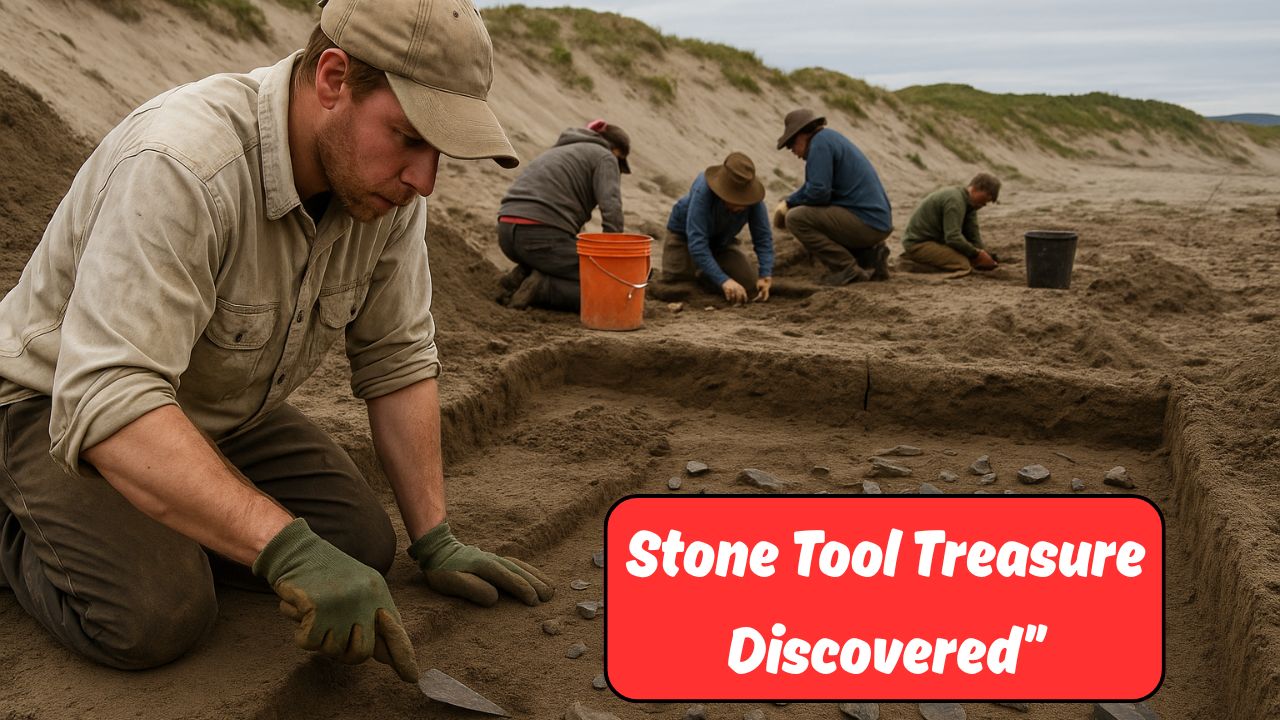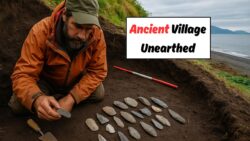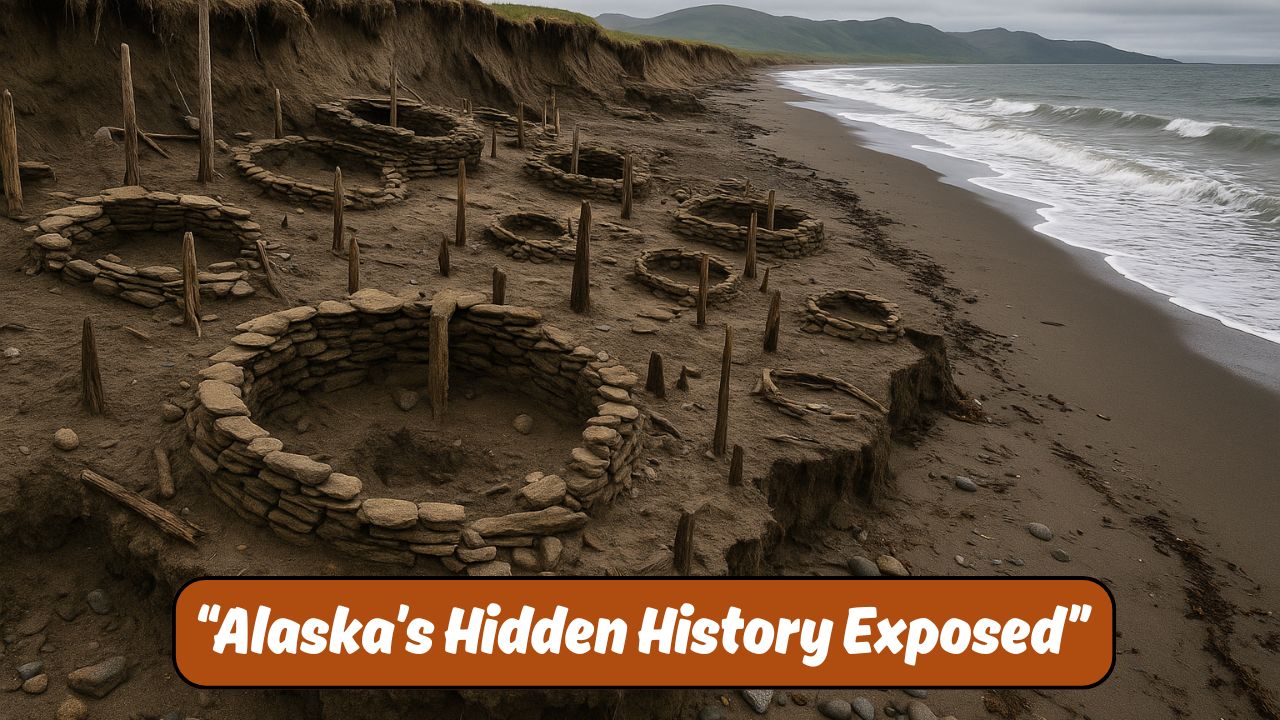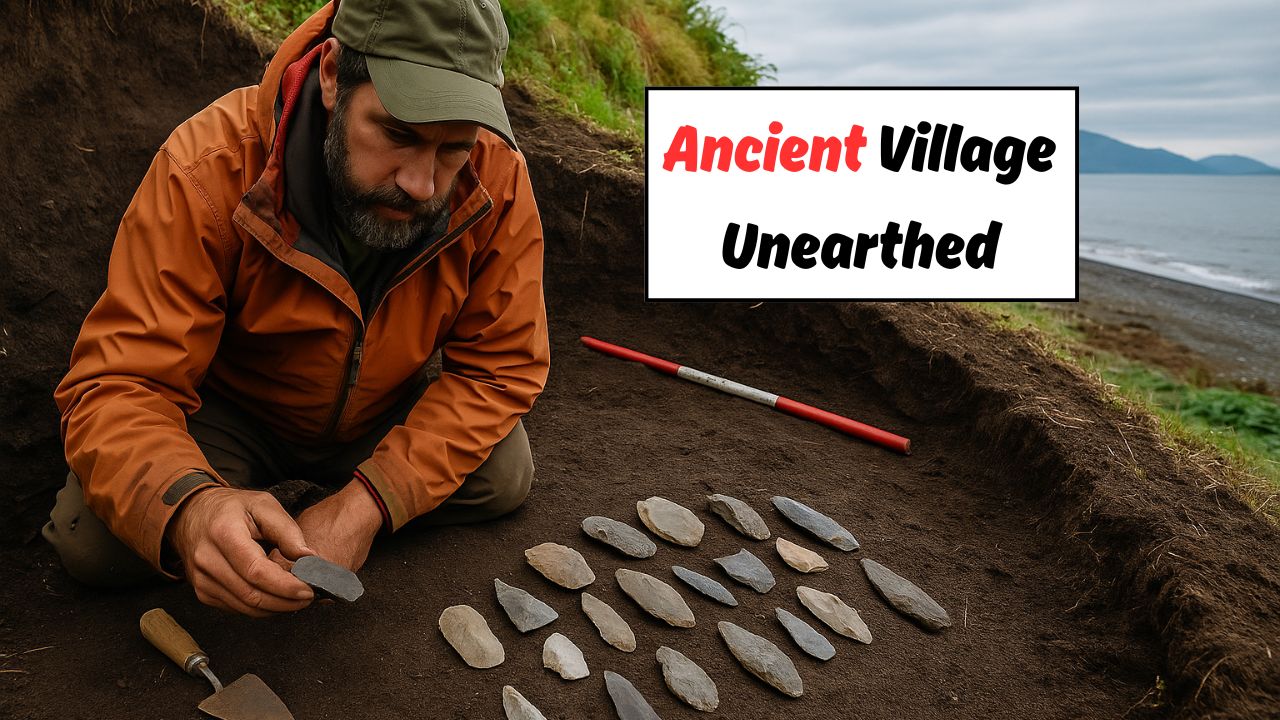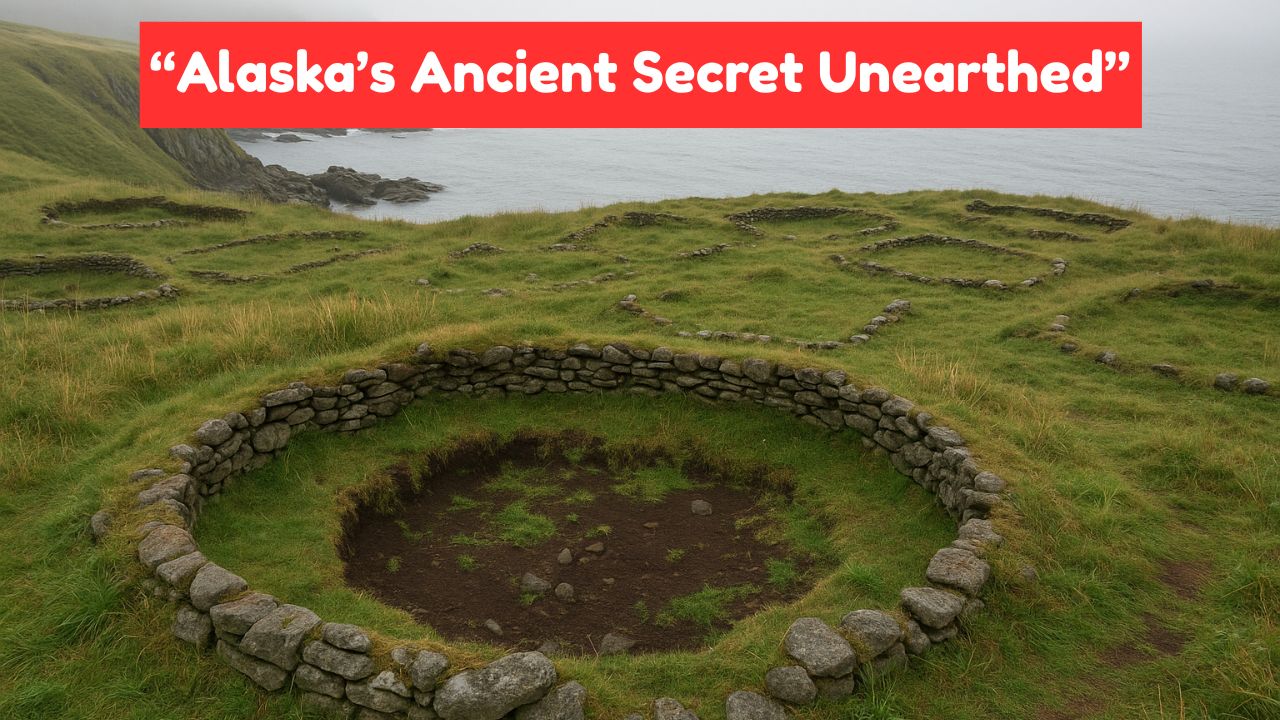7K-Year-Old Alaskan Village – The world of archaeology has once again been shaken with an extraordinary discovery — a 7,000-year-old village unearthed beneath layers of sand in Alaska. This incredible find, which includes a treasure trove of ancient stone tools and well-preserved remnants of early human life, is being hailed as one of the most significant archaeological revelations in recent decades. Experts believe this ancient settlement offers new insights into how early humans adapted to the extreme conditions of the Alaskan landscape. The discovery was made near the coast of the Aleutian Islands, a remote and often harsh region of southwestern Alaska. A team of archaeologists, supported by local Native communities and the Bureau of Land Management (BLM), was conducting a coastal erosion assessment when ground-penetrating radar signaled the presence of anomalies beneath the sand. What they unearthed exceeded all expectations — a sprawling village site with layered housing remains, tool-making areas, and food storage pits dating back nearly 7,000 years.
The Ancient Village Beneath the Sand
Initial excavations revealed carefully arranged stones, fire pits, and living spaces — all remarkably preserved by centuries of shifting sand.
- Located on a remote beach on the Aleutian chain
- Estimated to be from the Middle Archaic period (approx. 5,000 BCE)
- Likely inhabited by coastal foragers and early seafarers
- Structures made from driftwood, bones, and stone-lined walls
- Evidence of seasonal hunting and fishing activity
Key Features Found in the Village Site
| Feature Type | Description | Estimated Age | Material Used |
|---|---|---|---|
| Stone Tool Workshop | Sharp blades, arrowheads, scrapers | 7,000 years old | Chert, basalt |
| Living Huts | Oval structures with hearths | 6,800 years old | Driftwood, stone, clay |
| Food Storage Pits | Large underground chambers | 6,900 years old | Dug into permafrost |
| Animal Bones | Caribou, seal, salmon remains | 6,500 years old | Organic |
| Fishing Equipment | Stone sinkers, bone hooks | 6,900 years old | Bone, stone |
| Burial Artifacts | Beads, carved figures | 6,700 years old | Ivory, antler |
| Fire Pits | Ash layers, charred wood | 7,000 years old | Burnt driftwood |
Who Were the People Who Lived Here?
This ancient community appears to have been part of a broader network of indigenous coastal groups who mastered survival in subarctic environments.
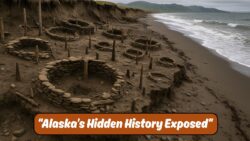 7,000-Year-Old Indigenous Ruins Exposed by Beach Erosion – Alaska’s Hidden History Emerges!
7,000-Year-Old Indigenous Ruins Exposed by Beach Erosion – Alaska’s Hidden History Emerges!
- Semi-nomadic but established seasonal base camps
- Hunted sea mammals, birds, and caribou
- Crafted tools and weapons from locally sourced stone
- Stored surplus fish and meat underground
- Participated in early trade with nearby groups
Lifestyle and Culture Indicators
| Indicator | Evidence Found | Cultural Insight |
|---|---|---|
| Toolmaking | Debris and sharpened flakes | Skilled in complex tool production |
| Shelter Construction | Stone and wood structures | Long-term seasonal habitation |
| Diet and Hunting | Animal remains, hooks | Depended on marine and land animals |
| Burial Practices | Beads, ivory carvings | Ritualistic respect for the dead |
| Trade & Interaction | Non-local stone types | Possible contact with inland tribes |
Why This Discovery is a Big Deal
The village site provides one of the earliest records of coastal human adaptation in Alaska. Unlike many sites degraded by thawing permafrost, this one remained sealed by dry, sandy conditions — preserving it nearly intact.
Archaeological Significance of the Site
- Offers rare insight into pre-Inuit cultures of the north Pacific
- Pushes back the timeline of coastal occupation in Alaska
- May reshape theories of early human migration routes
- Connects Beringian ancestors to Native Alaskan heritage
Rare Tools That Stunned Researchers
Among the most remarkable finds were stone spearheads and fishhooks crafted with such precision that modern archaeologists are calling them “stone-age engineering marvels.”
Types of Stone Tools Recovered
- Leaf-shaped spear points
- Serrated cutting blades
- Fishing sinkers
- Antler-carved decorative pieces
- Hammerstones and grinding slabs
How Locals and Scientists Are Reacting
The discovery is not only a win for science but also a cultural victory for Alaska Native communities. Elders from local tribes have been consulted throughout the excavation, ensuring the findings are handled with cultural respect.
Community & Government Involvement
- Tribal elders shared oral histories aligning with the site
- The BLM has pledged to protect the area as a heritage site
- Local schools are being invited to educational tours
- Museum exhibitions and digital reconstructions are underway
What’s Next for This Incredible Site?
The work has just begun. Excavation teams plan to expand their digs across the surrounding dunes, and researchers are calling for international collaboration to study climate adaptation among early humans.
Future Plans for Research
- Radiocarbon dating of charcoal and bone remains
- DNA testing of burial artifacts
- Reconstruction of seasonal migration routes
- Creation of a protected archaeological park
